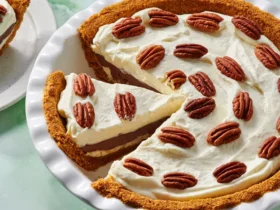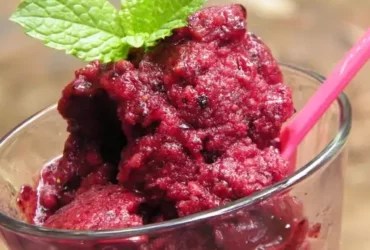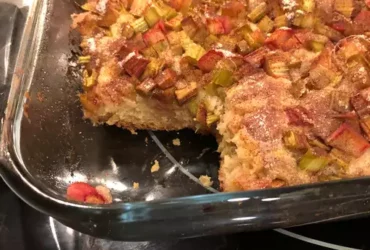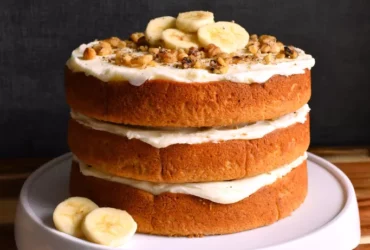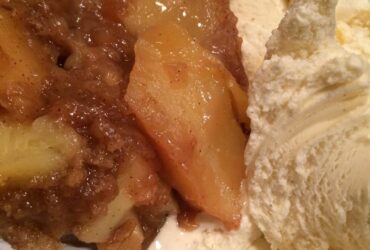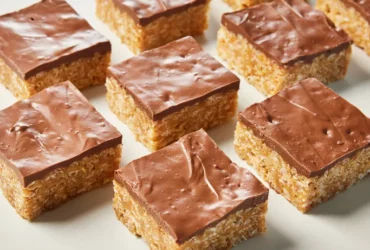Ingredients
Mise en Place
Mise en place, which translates to “everything in its place,” is a French culinary term that refers to the organization and preparation of ingredients before cooking begins. In the context of baking, it is essential for ensuring efficiency, preventing mistakes, and achieving consistent results.
When preparing to make banana cookies, mise en place involves setting out all necessary ingredients in their designated containers or measuring cups. This includes:
- Bananas
- All-purpose flour
- Baking soda
- Salt
- Granulated sugar
- Brown sugar
- Eggs
- Melted butter or oil
- Vanilla extract
- Nuts (optional)
This organization has several benefits:
- Promotes efficiency: By having all ingredients readily available, you can quickly access and measure out the required amounts.
- Reduces mistakes: Mise en place helps prevent errors in measurement or substitution of ingredients.
- Simplifies cleanup: Having all equipment and ingredients organized makes cleaning up afterwards more manageable.
Mise en place is not just limited to ingredients; it also involves preparing the necessary equipment and tools, such as:
- Measuring cups and spoons
- Mixing bowls
- Whisk or rubber spatula
- Baking sheets lined with parchment paper
In the case of banana cookies, mise en place would also include preparing any additional elements, such as:
- Chopped nuts for topping
- Sliced bananas for garnish
By establishing a well-organized workspace and having all necessary ingredients and equipment ready to go, you can streamline the banana cookies recipe process, reduce stress, and enjoy a more satisfying baking experience.
1 cup ripe bananas, mashed
Mashed ripe bananas are an essential ingredient in many banana-based recipes, including our delicious Banana Cookies Recipe.
The primary purpose of using mashed ripe bananas in this recipe is to add natural sweetness and moisture to the cookies.
Ripe bananas contain a high amount of starch that breaks down during the ripening process, turning into simple sugars. These sugars contribute to the sweetness of the cookies without adding refined sugar.
Furthermore, the starches and fibers present in ripe bananas provide structure and texture to the cookies, making them soft and chewy on the inside and crispy on the outside.
The ripeness level of the bananas is crucial as it directly affects the flavor and texture of the cookies. Overripe bananas will result in a stronger banana flavor but may also lead to an unpleasantly soggy texture. On the other hand, underripe bananas may not provide enough sweetness and moisture to the cookies.
To mash ripe bananas effectively for this recipe, you can use a fork to break down the fruit until it reaches your desired consistency. You can also use a potato masher or even a blender if you prefer a smoother texture.
It’s worth noting that the type of banana used in this recipe is crucial as well. The ideal variety for baking would be sweet and moist, like Cavendish or Plantain bananas. Avoid using green or unripe bananas as they can add an unpleasant bitterness to the cookies.
In summary, ripe bananas are a vital ingredient in our Banana Cookies Recipe, providing sweetness, moisture, structure, and texture to these delicious treats.
1/2 cup unsalted butter, softened
The ingredients for this Banana Cookies Recipe are essential to producing delicious and flavorful cookies.
Here is a detailed list of the required ingredients:
- 1/2 cup unsalted butter, softened: This ingredient adds moisture, tenderness, and flavor to the cookies. It’s essential to use high-quality butter that’s free from additives and preservatives.
- 3 large ripe bananas: These will be mashed and added to the dough, contributing natural sweetness and creamy texture.
- 1/2 cup white granulated sugar: This adds sweetness and tenderness to the cookies, balancing out the flavors.
- 1 large egg: The egg serves as a binding agent, holding the dough together while also providing richness and moisture.
- 2 teaspoons vanilla extract: This adds depth and warmth to the cookies, complementing the banana flavor.
- 1 3/4 cups all-purpose flour: This provides structure and texture to the cookies, allowing them to hold their shape and spread evenly during baking.
- 1/2 teaspoon salt: A pinch of salt helps balance out the sweetness and brings out the flavors in the cookies.
These ingredients come together to create a delicious and satisfying Banana Cookies Recipe that’s perfect for snacking or sharing with friends and family.
1/2 cup white granulated sugar
The ingredient list for our banana cookies recipe includes various components that come together to create a delicious and chewy treat. One key ingredient we’ll be focusing on is white granulated sugar, also known as table sugar or sucrose.
White granulated sugar plays a crucial role in the texture and flavor of our banana cookies. It provides sweetness, helps to balance out the flavors of the ripe bananas, and contributes to the cookie’s tenderness and chewiness.
The common use of white granulated sugar in baking is due to its accessibility, affordability, and neutral flavor profile. Unlike brown or turbinado sugars that have a distinct flavor, white granulated sugar doesn’t impart any strong flavors to our banana cookies, allowing other ingredients like the ripe bananas and spices to take center stage.
In terms of measurements, we’re using 1/2 cup (100 grams) of white granulated sugar in this recipe. This is a moderate amount that will provide sweetness without overpowering the other flavors.
It’s worth noting that while refined sugars like white granulated sugar have been linked to various health concerns when consumed excessively, they can be part of a balanced diet when consumed in moderation. If you’re looking to reduce your refined sugar intake, consider substituting some or all of this ingredient with natural sweeteners like honey, maple syrup, or coconut sugar.
Keep in mind that using alternative sweeteners may affect the texture and flavor of your banana cookies, so it’s best to experiment with small batches before making a large batch. Additionally, ensure you’re using high-quality ingredients to get the best results from your recipe.
1 large egg
In this banana cookies recipe, we will be using one large egg as an essential ingredient to bind all the other ingredients together and add moisture to the cookies.
An egg serves multiple purposes in baking, including leavening, moisturizing, and enriching the flavor of the final product. The protein and fat content of eggs also help to strengthen the structure of the cookies, making them more tender and chewy.
It’s essential to choose a large egg for this recipe as it will provide the right balance of moisture and leavening power to create delicious banana cookies. Using too small an egg may result in a denser cookie, while using two eggs might make the cookies overly rich and soggy.
The large egg should be at room temperature before adding it to the mixture. If you’re using a cold egg, it may not mix well with the other ingredients, which can affect the texture of the dough. So, take the egg out of the refrigerator about 30 minutes before you start preparing the cookie batter.
When cracking the egg into the mixing bowl, make sure to get all the egg white and yolk into the bowl by gently pressing on the sides of the shell with a spatula or spoon.
Now that we have discussed the importance of using one large egg in this banana cookies recipe, let’s proceed with combining it with other essential ingredients like mashed bananas, sugar, butter, and flour to create a delicious cookie dough.
Pantry Staples
The success of any baked good, including banana cookies, relies heavily on having the right pantry staples on hand. These essential ingredients form the foundation upon which more specialized or exotic components are built.
Panels or shelves stocked with flour serve as a key starting point. For most baking applications, all-purpose flour is preferred due to its versatility and broad utility across various recipes. Its protein content provides structure while maintaining the delicate texture demanded by many sweet treats.
Sugar, in one of its various forms – white, brown, or even honey for some unique flavor profiles – adds sweetness without adding moisture, which would otherwise alter the intended consistency of the cookies.
Other pantry staples include salt and baking powder. Salt serves several purposes within baked goods: it enhances flavors by reducing bitterness from sugar or other ingredients; helps bring out sweetness; acts as an antiseptic agent to extend shelf life; and aids in leavening processes for airier, lighter textures in final products.
Baking powder is a mixture of baking soda (sodium bicarbonate) and an acid (usually cream of tartar), with the addition of an anti-caking agent. The purpose of this blend is to create a leavening action in recipes that do not include yeast as a rising agent, allowing them to rise quickly upon exposure to heat.
For banana cookies specifically, you’ll also want to have bananas on hand – ripe ones for the best flavor. Other ingredients may include oil or butter, eggs (for moisture and richness), vanilla extract (to enhance sweetness without adding calories), and various types of nuts or spices according to your taste preferences.
2 cups allpurpose flour
All-purpose flour is a fundamental ingredient in baking, and it plays a crucial role in the structure and texture of banana cookies. Here are some key things to know about using all-purpose flour in your recipe:
Characteristics of All-Purpose Flour
- Protein content: All-purpose flour typically has a protein content between 10-12%. This is higher than cake flour but lower than bread flour, making it suitable for a wide range of baked goods.
- Gluten development: The moderate protein content in all-purpose flour allows for good gluten development, which is essential for creating structure and texture in cookies.
- Starch content: All-purpose flour contains both amylose and amylopectin starches. These starches contribute to the texture and consistency of the cookies.
The two cups of all-purpose flour required for this banana cookie recipe will provide structure, texture, and a neutral flavor base for the other ingredients.
Substitution Options
If you need to substitute all-purpose flour with another type of flour, keep in mind the following:
- Cake flour:Using cake flour will result in a tender and delicate cookie. However, it may lack structure and spread more during baking.
- Bread flour:This option will produce a chewier and denser cookie with a slightly different texture.
It’s worth noting that substituting flours can alter the final product significantly. If you choose to experiment, it’s best to adjust other ingredients accordingly to maintain the desired flavor and texture.
Tips for Working with All-Purpose Flour
- Sift before measuring: Sifting the flour will remove any lumps and ensure accurate measurements. This step is crucial for achieving the right consistency in your cookies.
- Use a digital scale: For precise measurements, consider using a digital scale to measure out the required amount of flour.
By following these guidelines and tips, you’ll be able to use all-purpose flour effectively in your banana cookie recipe and achieve the perfect texture and flavor.
1 teaspoon baking powder
Baking powder is a leavening agent commonly used in baked goods such as cookies, cakes, and quick breads. It’s a mixture of baking soda (sodium bicarbonate) and an acid, usually cream of tartar, that releases carbon dioxide gas when it comes into contact with liquid ingredients and heat. This reaction causes the dough to rise and gives baked goods their light and airy texture.
In the context of banana cookies, baking powder serves a dual purpose: it helps to lighten the texture of the cookies while also helping to control the spread during baking. This is particularly important in cookie recipes that include mashed bananas, as they can sometimes make the dough more prone to spreading.
The recommended amount of baking powder in this recipe, 1 teaspoon per cup of all-purpose flour, strikes a balance between providing enough lift and avoiding over-leavening, which can result in a soapy or metallic taste. Baking powder is typically double-acting, meaning it releases gas twice: once when it comes into contact with liquid ingredients and again when exposed to heat during baking.
It’s worth noting that using too much baking powder can have unintended consequences, such as an unpleasant aftertaste or a cookie that spreads excessively. On the other hand, using too little may not provide enough lift, resulting in dense cookies. The key is finding that sweet spot where the leavening properties of the baking powder complement the natural sweetness and moisture of the bananas.
In this recipe, the combination of mashed ripe bananas, brown sugar, eggs, and melted butter provides a rich source of flavor and moisture. The addition of 1 teaspoon of baking powder helps to balance out these elements, ensuring that the cookies retain their structure and texture even after baking.
1/4 teaspoon salt
The use of 1/4 teaspoon of salt in banana cookies is a crucial element that enhances the flavor and texture of the final product.
Salt has several functions in baking, including balancing sweetness, enhancing flavors, and controlling yeast fermentation (if applicable). In the case of banana cookies, salt plays a significant role in balancing the natural sweetness of the bananas, which can otherwise make the cookies taste overly sweet.
The small amount of 1/4 teaspoon may seem insignificant, but it makes a noticeable difference. Salt helps to bring out the other flavors in the cookies, including the nuttiness of the sugar and the depth of the browned butter.
When selecting salt for baking, it’s essential to choose an unrefined or kosher salt that has a coarser texture than table salt. This type of salt dissolves more slowly, allowing for better flavor distribution throughout the dough.
In terms of the effects on texture, the small amount of salt helps to strengthen the gluten network in the cookies, giving them a crisper exterior and a chewier interior. The salt also helps to control the spread of the cookies during baking, resulting in a more uniform shape and texture.
It’s worth noting that using too much salt can be detrimental to the flavor and texture of banana cookies. A general rule of thumb is to use no more than 1/2 teaspoon of salt per batch of cookies, with adjustments made as needed based on personal preference.
In summary, using 1/4 teaspoon of salt in banana cookies is a deliberate choice that enhances both the flavor and texture of the final product. By selecting an unrefined salt and using it judiciously, bakers can create banana cookies that are balanced, delicious, and full of depth.
1/2 teaspoon ground cinnamon (optional)
The use of ground cinnamon as an optional ingredient in banana cookies offers several benefits to enhance their flavor and aroma.
Cinnamon, with its distinctive warm and comforting taste, complements the sweetness of bananas perfectly.
When added in moderation, about 1/2 teaspoon is sufficient, cinnamon introduces a subtle depth to the cookies without overpowering them.
This balance is crucial, as excessive cinnamon can lead to an overwhelming flavor profile that dominates the other ingredients.
For those who enjoy a hint of spice in their baked goods, adding ground cinnamon to banana cookies provides a delightful twist on a classic recipe.
Incorporating cinnamon into banana cookies also adds a sensory element, as the aroma of warm spices wafts from the oven, enticing everyone within its reach.
Special Touches
The perfect banana cookies recipe requires not only high-quality ingredients but also a few special touches to make them truly exceptional.
First and foremost, when it comes to the ingredients, choose ripe but firm bananas for the best flavor and texture. Aromatic vanilla extract adds depth and warmth to the cookies, while brown sugar provides a rich, caramel-like sweetness.
Avoid using granulated sugar as it can make the cookies too sweet and lacking in character; instead opt for muscovado or turbinado sugar for its unique flavor profiles.
The addition of chopped walnuts or pecans adds texture and crunch to the cookies, while also introducing a satisfying nutty flavor. However, feel free to omit them if you’re not a fan of nuts.
A pinch of salt is essential in balancing out the sweetness of the sugar and bananas; use kosher or sea salt for its coarser texture and more nuanced flavor.
Special touches include using high-quality cocoa powder for an intense chocolate flavor, incorporating instant coffee powder to deepen the flavor, or adding a splash of milk or cream to create a chewy and soft center.
For added moisture and tenderness, try adding mashed avocado or extra-virgin coconut oil to the dough. This not only improves the texture but also introduces healthy fats into your cookies.
Lastly, be sure to use room-temperature ingredients, including the eggs, butter, and sugar, for better emulsification and a more even bake.
To take your banana cookies to the next level, try adding different flavor combinations such as dried cranberries and orange zest, dark chocolate chips and espresso powder, or chopped hazelnuts and maple syrup.
1/2 cup chopped walnuts or pecans (optional)
The ingredients for the Banana Cookies Recipe can be divided into two categories: essential ingredients and optional ingredients.
Essential Ingredients:
- 2 1/4 cups all-purpose flour
- 1 teaspoon baking soda
- 1 teaspoon salt
- 1 cup unsalted butter, at room temperature
- 3 large eggs
- 2 cups mashed ripe bananas
Optional Ingredients:
- 1/2 teaspoon vanilla extract (optional)
- 1/2 cup chopped walnuts or pecans (optional)
The 1/2 cup of chopped walnuts or pecans is an optional ingredient that can add texture and flavor to the cookies. If you choose to include this ingredient, make sure to chop them finely so they distribute evenly throughout the dough.
1 tablespoon honey or maple syrup (optional)
The ingredients for banana cookies often include a mixture of sweet and savory components to create a balanced flavor profile.
Some common ingredients found in this recipe are:
- Bananas: This is the primary ingredient, providing natural sweetness and moisture. They can be fresh or ripe bananas, depending on personal preference.
- Sugar
- Flour: This staple ingredient serves as a base for the cookies’ structure and texture.
- Baking soda: A common leavening agent that helps regulate pH levels and promotes even browning.
- Salt
- Cream or butter: These contribute to the cookies’ richness and tenderness. Some recipes may use a combination of both, while others opt for one or the other.
- Vanilla extract: This adds depth and warmth to the cookies’ flavor profile
Optional ingredients include:
- Honey or maple syrup: These alternatives to refined sugar can add a distinct, sweet taste.
- Nutmeg
The choice of ingredients and their proportions can vary depending on the desired flavor profile and texture. Experimenting with different combinations may help in finding the perfect blend for personal preference or specific occasions like holidays or special events.
- Best Datanyze Alternatives for 2025 - April 24, 2025
- Best Hunter.io Alternatives for 2025 - April 22, 2025
- Best Lead411 Alternatives for 2025 - April 22, 2025


